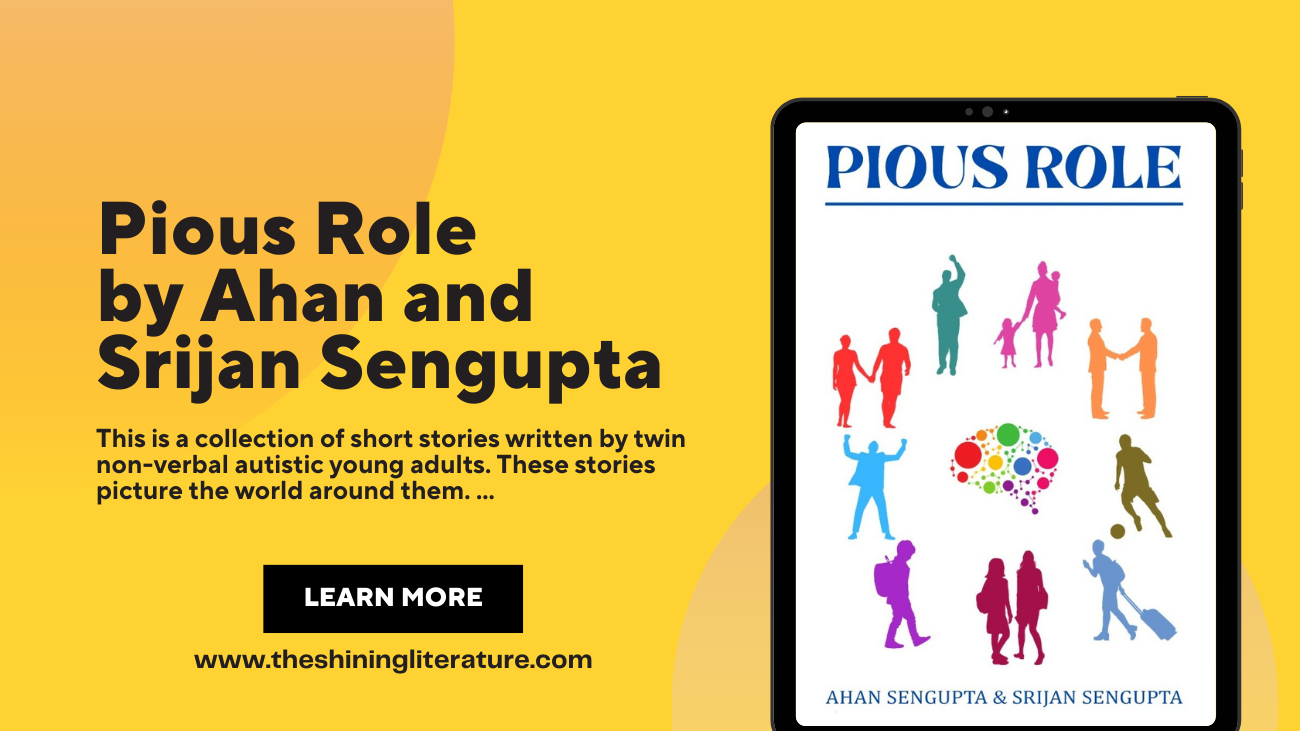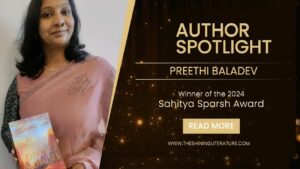“Pious Role” is not just a collection of short stories; it is a literary testament to the boundless capabilities of the human spirit. Authored by Ahan and Srijan Sengupta, twin non-verbal autistic young adults, this compilation offers readers a unique and authentic glimpse into their world. The 34 short stories within the book paint a vivid mosaic of society, portraying individuals in all their complexities, strengths, weaknesses, and the intricate dance of their emotions. The authors show their creative prowess and capabilities to write through their imagination and clarity of thought.
The distinctive feature of this collection lies not only in the variety of characters but also in the breadth of themes explored. Ahan takes the lead by contributing 29 stories, while his brother Srijan adds his voice to the narrative with five stories. The stories vary not only in length, ranging from brief 100-word snippets to more elaborate tales crossing the 1000-word mark, but also in the depth of their emotional impact. At the same time, they also transport the readers into a different world that is driven by imagination, thoughts and expression.
The characters populating these narratives are as diverse as the stories themselves. From teenage boys and girls navigating the tumultuous waters of adolescence to young adults in colleges and universities, and even elderly men and women reflecting on the tapestry of their lives, the collection encompasses a broad spectrum of human experience. The characters assume roles as students, teachers, stockbrokers, doctors, authors, and even CID officers, lending the stories a multifaceted richness. Stories like “A Holy Incident,” “Bifurcation,” “The Curious Boy,” “Taru’s Story” and many others effortlessly captivate the imagination of the readers.
One of the striking aspects of “Pious Role” is its unflinching portrayal of the human experience. The stories delve into the intricate dynamics of relationships, exploring themes such as envy, jealousy, friendship, attraction, and love among school boys and girls. The narratives seamlessly transition to the realm of romanticism, relationships, and revenge, encapsulating the emotional rollercoaster faced by college and university students. Moreover, the collection provides poignant glimpses into the past, with elderly characters reminiscing about the milestones and regrets of their lives.
In the story titled “Silly,” Sraddha confronts her long-forgotten childhood crush, encapsulating the nostalgic and often bittersweet nature of revisiting the past. Contrastingly, in “Heir,” the complexities of a polyamorous relationship take center stage as a lady grapples with uncertainty about the father of her child. Each story is a narrative gem, offering readers a kaleidoscopic view of human relationships and emotions.
The storytelling technique employed by Ahan and Srijan is distinctive. Flashbacks and moments of solitary reflection serve as portals into the characters’ minds, unveiling new perspectives and layers of thinking. In “Immersion,” a stockbroker grapples with an unpleasant truth from his past while contemplating in isolation. Similarly, in “Avenge,” a housewife unravels the true meaning of the present as she turns the pages of her diary. These moments of introspection and retrospection add depth to the narratives, revealing the intricacies of human thought and emotion.
The strength of “Pious Role” lies not just in the individual stories but in the overarching portrayal of the real world through a lens of flashes and emotions radiating human pathos. The collection becomes a mirror reflecting the diverse facets of society, capturing moments of joy, sorrow, love, and revenge. The authors’ ability to navigate these complex emotions and present them in a typology that resonates with a wide audience is commendable.
It is noteworthy that the authors, despite their non-verbal autistic condition, have found a powerful medium of expression in the written word. The stories, though diverse, share a common thread of authenticity, offering readers a genuine and unfiltered glimpse into the minds of the authors. The sincerity with which Ahan and Srijan craft their narratives is palpable, creating a connection between the stories and the reader that transcends the boundaries of conventional storytelling. They also display a close and in-depth understanding of human temperament, behaviour and reactions through their observations of the world.
Also Read: Book Review – That Night by Nidhi Upadhyay




